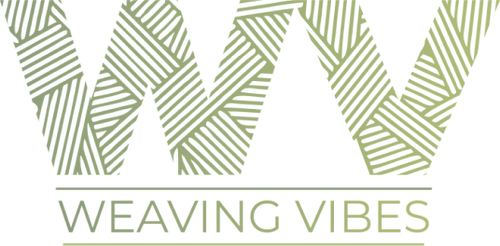Sustainable, slow fashion trend in 2024.
Discussing sustainable fashion trends. We all know the core value of slow fashion production is to create eco-friendly clothing and sustainable fabric through a transparent, ethical supply chain that manufactures those environmentally friendly clothing materials.
Without causing any harm to nature in any phase included in the making of vegan fashion and products. From manufacturing the fabric to color dying that cloth piece. Recycling it to disposal, every step is taken with a choice to reduce the impact of the fashion industry on the environment and planet.
Mentioned above are a few core values that do not change in the sustainable textile weaving journey. Whether it be the sustainable fashion trend in 2022 or 2033
For 2024 slow fashion trends will be focused on manufacturing organic clothing that does less waste of water, green fashion made out of organically grown biodegradable fabrics, recycling, and upcycling designer fashion.
Many other sustainable fashion trends might follow after these but these slow fashion trends are observed to potentially rise this year, as sustainable fashion brands are also making efforts in the same direction.
Zero-waste fashion
As the heading suggests, this trend of creating zero-waste fashion is accelerating all along as conscious fashion supporters, consumers, and brands are repeatedly demanding transparency in the supply chain of sustainable fabrics.

Image source: the Harra label. A sustainable apparel manufacturing homegrown startup. Shrishti Mehta
What is zero-waste fashion and what brands support sustainable fashion in their practices?
To assure that the brand is truly 100% green. Brands fabricating natural weaves that will accelerate green fashion ideology or it is just another greenwashing agenda put up by namely brands for publicity purposes.
As of now empowered consumers are looking for answers from so-called “Sustainable brands” so the only option left for brands is to indulge in zero-waste practices throughout the fashion-making process, which as a result will also make the process of textile production transparent to all the consumers.
Recycling and Upcycling
Brands and consumers taking up initiatives to produce eco-friendly clothing and sustainable fashion out of old textiles like vintage textiles and old materials to create new clothing (recycling) will be another must-watch and follow the slow trend of this year.
After recycling it’s turn for upcycling think of this as reinventing the idea of waste to create circular fashion that is also helping the planet and its delicacy.

Image source: ocean plastic to Fabric mission by fashion2fabric
The usage of Seaquel a synthetic fabric yarn made from plastic waste in the ocean will be a great example of this.
Switching to sustainable fabrics
The last yet foremost trend that everyone should appreciate is switching to organically generated plant-based fabrics such as organic cotton, hemp, and bamboo fabric, are he most followed alternative for synthetic fabrics that retard the environment’s health and pollutes our landfills and oceans.

Image source: hemp fabric produced by Weaving Vibes..

Image source: Weaving Vibes a sustainable textile manufacturer.
Why bamboo or hemp fabric?
They have emerged as the excellent compatible textile material that is breathable and most comfortable for human wear found in nature. Both hemp fabric & bamboo fabric are anti-bacterial and stronger than usual fabrics. And it saves water!
Rental rather than buying
As the fashion industry is growing, evolving, and redesigning fashion modules of many decades every day this trend of rental clothing is becoming a pocket-friendly alternative to buying high-end fashion clothes

Image source: the internet. Quoted for advertisement.
Thrifting is a market of 36 billion globally and according to a report by resale platform ThredUp and the analytics firm GlobalData, second-hand clothes sales will rise to nearly $77 billion by 2025.
Not only is rental a better option for reusing old fabrics but it will also reduce the waste of clothing materials that are dumped in landfills and oceans then further contributing to intoxicating soil, land, and ocean with micro-plastic.
Vegan fashion
Animal cruelty-free fashion destination.
As per the escalating situation, more and more fashion and luxury brands are becoming environmentally conscious. Surveys have noticed that consumers are willing to pay more for vegan styling that is created without harming any animal.

Image source: Shripat Jagidar founder of Weaving Vibes a startup that supports and generates vegan fashion
Escorting animals from forests and then exploiting them to reach consumers’ demand for fur and animal skin was a big business. FOUR PAWS(non-profit organization-US) research estimates that over two billion animals are used in the global fashion industry every year in the wool, fur, and leather industries alone.
So with increasing awareness of vegan and sustainable fashion, the futile slaughtering of innocent lives hopefully will be reduced, and it great if ended.
Homegrown business
This year bolstering homegrown indigenous businesses is a well-discussed and noted trend that will set up its momentum. After the Indian government’s initiative ‘ Vocal For Local’ is rooted in a sense of affiliation with homegrown startups.
These startups primarily became major suppliers during the pandemic situation, the Indian market is a flourishing steak place also termed as ‘new eras silicon valley’ by Western countries.
No the less this trend of supporting local brands and products is dominating the consumer’s choices and so in conclusion people are inclining their interest more toward locally sourced, farm-to-table, sustainable products.

Image source: Vox a new portal that talks about serious political, environmental, and global issues.
The fashion industry is responsible for producing 60% of plastic waste. About 500,000 tons of microfibers are dumped into the ocean every year just by the fast fashion industry. So as the circumstances describe slow fashion is not just a trend but a crucial step world must take for addressing the danger and disgrace this textile industry does to nature.
To know more about the impact of fast fashion on the environment refer to this website
Overall, the sustainable slow fashion industry plays a crucial role in improving and solving environmental that should be a concern in present. It is not just a trend but a strategic step for making the fashion industry an friendly and responsible contributor to the environment and society.



